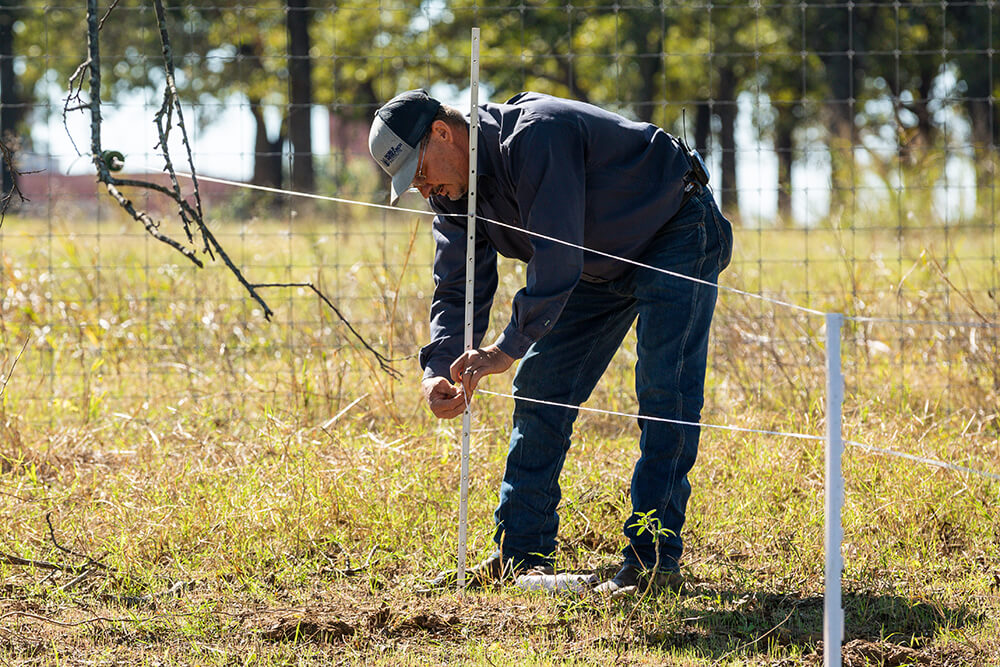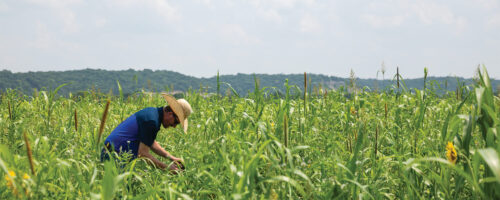How We Are Regenerating The Noble Ranches By Starting With Context
Joe Pokay, Noble's General Ranch Manager, shares how understanding context on the Noble ranches helped us implement regenerative agriculture practices.
For some time, I heard and was taught about the five soil health principles:
- Cover the Soil
- Minimize Soil Disturbance
- Increase Diversity
- Maintain Continuous Living Plants/Roots
- Integrate Livestock
All made sense to me and seemed applicable across any ranch.
However, it wasn’t until I was introduced to a sixth principle by the Understanding Ag consultants that I truly saw how universal the soil health principles are. That sixth principle actually takes the No. 1 spot: Know Your Context.
Knowing your context includes a broad understanding of the operation. Your context includes hard facts, like knowing the historical forage base, climate and weather patterns, geography, and available resources.
However, context also includes an honest evaluation of family/employee dynamics, skill set, and what the goals are for the operation. Once I grasped the principle of context, adhering to the remaining soil health principles doesn’t seem as daunting.

The Context for Noble Ranches
A part of Noble Ranches’ context is to prioritize the health of the soil to support our grazing-animal and pecan enterprises. We stack as many enterprises as we can on the same number of acres to create different revenue streams and hedge ourselves against volatility in any one market.
Balance Management Between Soil and Production
Our management tries not to maximize any one thing and forsake the other. We try to keep a constant balance between managing what’s best for the soil and what is best for production. For example, we graze using high stock density to concentrate animal impact on the land. This stimulates the soil and lays down standing dormant forage for the soil life to use.
Constant ultra-high density stock density, however, can lead to a decrease in animal performance. We follow the high animal impact grazing period with a lower stock density to make sure that we are meeting the animal’s nutritional demands and allowing those animals to perform.

Consider Context of The Ranch’s Ecoregion
In Southern Oklahoma, Noble Ranches are a part of the Cross Timbers Ecoregion. We sit uniquely between the vast expanse of woodlands to the east, and the wide-open prairies to the west. The ranches have some diversity of warm-season and cool-season prairie grasses, but we also have the potential to grow impressive stands of green briars and locust thickets if we leave our pastures to succession.
The power of succession in this area drives our ecological context. We manage our grazing through tough, rocky, thorny landscapes by using electric polywire and permanent high-tensile electric wire. Through managed grazing, we have seen high-succession palatable plants come back to the ranches where once they would have been grazed out.

Consider The Ranch’s Historical Context
Our landscape vision for our Noble Ranches is based on historical ecological context. This area 500-plus years ago would have been a grassland savanna, so we are charged with using the knowledge we have and the tools, when necessary, to bring our ranches back to their most natural productive state.
Consider the Context of Your Grazing Animals
Another aspect of the ranch’s context is selecting and managing for animals that are going to do the best in the environment we have. Knowing that this part of our context, it makes management decisions much easier.
Any of our cattle that don’t breed back or raise a calf to weaning are culled. They’re not bad cows – some of them are very good by conventional measures and have been productive in the past. But adapting our herd to match our environment requires them to thrive and be productive with what nature has to offer. We want all of our animals to thrive in the abundance of nature, and not be propped up by a large number of inputs.

Regenerative Land Stewardship and Lasting Profitability
Our goal of regenerative land stewardship with lasting producer profitability is the largest driver of context for Noble Ranches. The ranches exist to help producers in their regenerative journeys, so we manage the ranch enterprises to be examples of what can be done and what you might want to avoid. Toward that end, we will continue to share our successes as well as what we learn from what doesn’t work out that well, at least in our context.



Comment